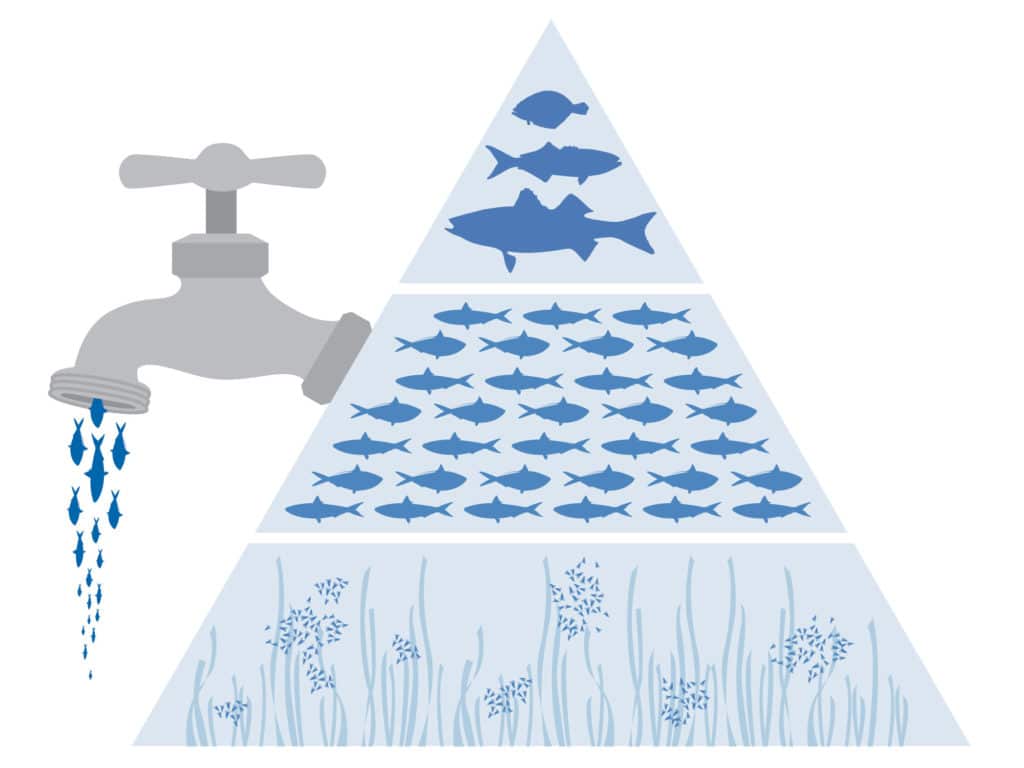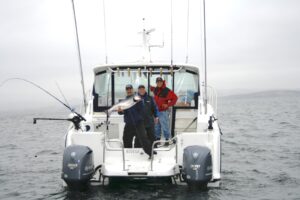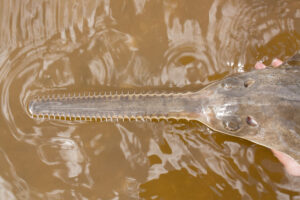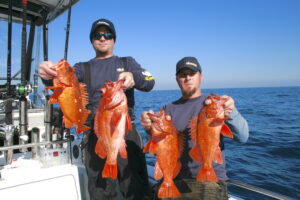This column has covered the subject of forage fish in the past. They are not just important to sport-fishing success — they are very important.

Ensuring that the middle level of the marine food pyramid is strong enough to support the apex predators, other than humans, is the only road to sustainable and robust fish populations. And ensuring there are fish to catch warrants a healthy recreational-fishing industry.
There are a lot of fish in both federal and state waters that fall into the forage category: sand lance, chub mackerel, herrings, halfbeaks, bay anchovies and more. A few of them are being managed with fishery-management plans, but the majority are not and could be exploited for a variety of uses, such as for fish meal or fish-based feed for aqua-cultured fish. Some, such as chub mackerel, could be used for human consumption. The problem with exploitation without reasonable controls is that there is no regulation of the amount of fish that can be removed. Not only does this impact the target species, but it also potentially impacts the species that rely on these fish as food. Understanding and considering forage species’ value in the marine ecosystem is one of the major concepts of ecosystem-based fisheries management (EBFM).
Make a List
Last summer, the Mid-Atlantic Fishery Management Council took a big step toward EBFM by putting in place its Unmanaged Forage Omnibus Amendment. This amendment prohibits new development and expansion of directed commercial fisheries for a number of unmanaged forage species in mid-Atlantic federal waters. The council initially looked at a list of more than 250 forage species, but it narrowed that down to a list of 15 species, families, orders and other taxonomic groupings for inclusion. (A complete list can be found at mafmc.org/newsfeed/2016/mid-atlantic-council-approves-amendment-to-protect-unmanaged-forage-species.) The prohibition of development or expansion of directed commercial fisheries will remain in place until the council has an opportunity to assess the available scientific information for these species and consider the potential impact on existing fisheries, fishing communities and the marine ecosystem. “Forage species play a vital role in maintaining the productivity and structure of marine ecosystems and are currently at risk of unregulated fisheries development in the absence of adequate science to ensure their ecological sustainability,” says MAFMC chairman Rick Robins. “With this action, the Mid-Atlantic Council is taking a proactive approach to conserving unmanaged forage species and the ecosystem services they provide in the mid-Atlantic region.”
Spread the Word
The amendment’s passage took a year and a half of heated debate within the MAFMC, but it marks a real change in the fisheries-management process for the mid-Atlantic and hopefully other regional fishery management councils (RFMCs). Being proactive in resource protection, rather than reactive after damage is done, makes all kinds of sense to me, and I hope that this forward-thinking fisheries management spreads to other East Coast RFMCs. The Pacific Council has adopted a similar amendment. I had actually hoped that for the named species under the MAFMC amendment, there would be some impact on the adjacent council regions; however, the amendment specifically states that it is for the MAFMC region.
Co-Op Effort
Another strong point of this management effort is that it demonstrates the benefits of working with other advocacy groups that are interested in sustainable resources and management. The recreational-fishing industry worked in concert with the environmental community to ensure that the amendment was enacted with some real benefit to resources and user groups. This collaboration proves that not all environmental nongovernmental organizations are the enemy of recreational users, and they do not all simply want to close the ocean to any consumptive uses. It also plainly shows the value and effectiveness of collaborative efforts.
First Steps
Did this amendment cover every possible forage fishery? No, it did not. That would be an unusual result for any fisheries-management effort. But it set a precedent, at least for East Coast fisheries management, and set the stage to allow the MAFMC to move boldly toward EBFM. Capt. John McMurray, an MAFMC member, summed it up in one of his blogs: “What does [the amendment] mean? It means an incremental yet deliberate move to managing fisheries in a more holistic way, taking into account things like forage needs, habitat, climate-change impacts and species interactions. This will be no easy task, but the council is doing it! And the Unmanaged Forage Amendment was a critical first step.”
It is not business as usual for fisheries management to be out front of potential problems. The MAFMC amendment shows that it can be done, however, and when it is, all resource users benefit in the long run. I hope that other RFMCs take notice and take action.









